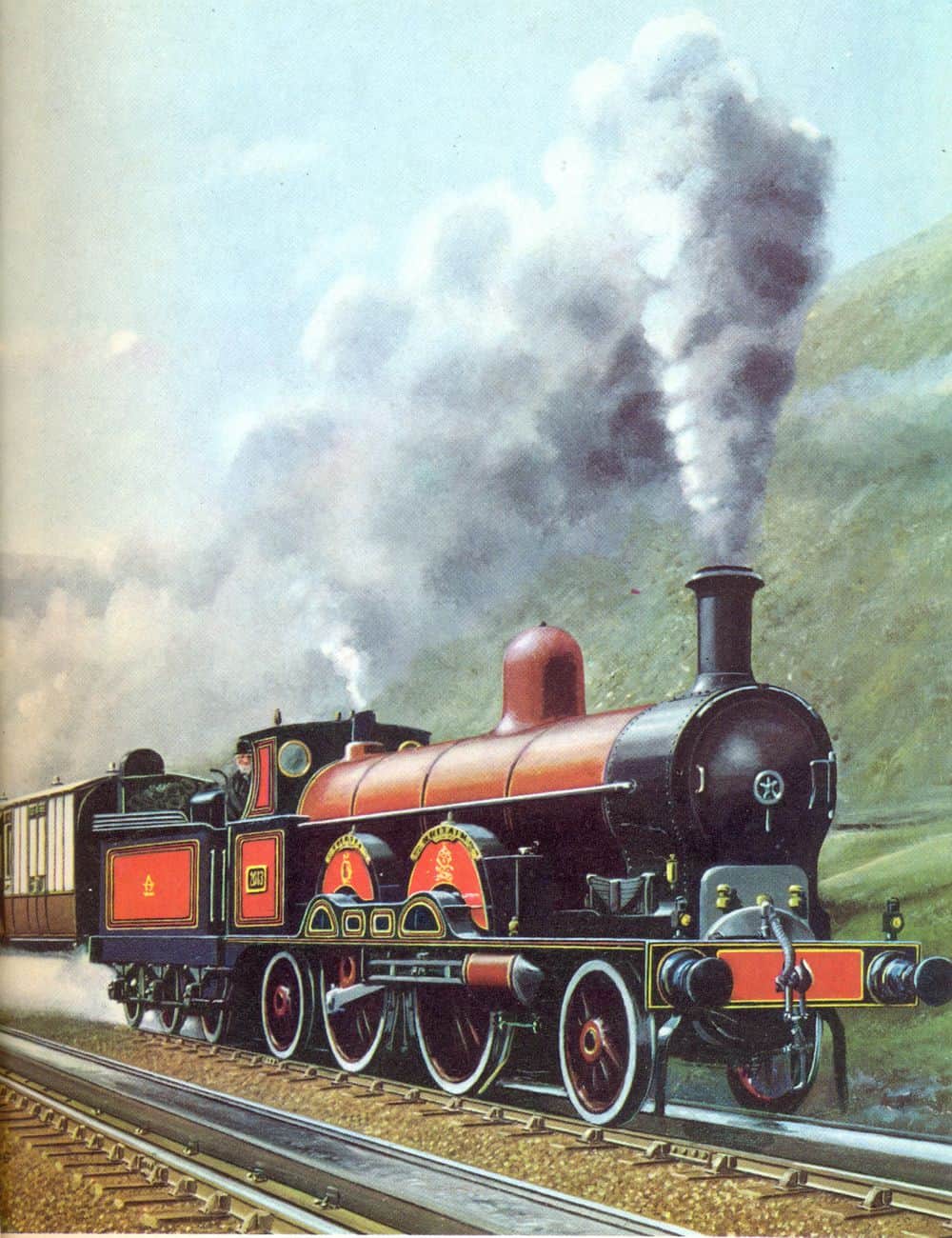| Seeing red (1) |  |

| Seeing red (1) |  |
I [Kevin] recently received the following communication from Harry Jack and it may help those who wander onto this website looking for Victorian underwear or political blunders or mere curiosity about what drives someone in his eighty third year to maintain a website.
I'm still here (at 84) and often look at your wonderful Steam Index.
I was a bit horrified to see that vermilion Bloomer at the top of the LNWR page, from E F Carter's book 'Britain's Railway Liveries'. As far as the LNWR is concerned that book is appalling. His ridiculous description of the Ramsbottom livery - green with black and white lines - was obviously taken from a wrongly-painted model in the Science Museum, but he doesn't say so. As usual, he doesn't give his sources. Sadly his book led to the preserved Ramsbottom 0-4-0 ST - the only surviving standard-gauge Ramsbottom engine - being painted with these daft white lines.
But the LNWR Southern Division vermilion livery is a myth. It was first described as vermilion in the Loco Mag at the end of their LNWR S Div series in 1898, I believe because of the editor's misreading of a piece in the old 'English Mechanic'. (I've explained all this - at boring length - in articles in the L&NWR Society's Journal.) When Hamilton Ellis saw this in the LM - or perhaps when he saw the 'F. Moore' vermilion Bloomer painting in the Science Museum, he exclaimed in his book 'The Beauty of Old Trains' (1952): "It was vermilion!" He also made a very inaccurate painting of a Bloomer (No 607 at Shugborough Tunnel) in vermilion, which has been repro'd all over the place, and the notion of a vermilion livery took off. Vermilion locos in books, postcards etc etc.
It seems to be just too captivating an idea to let go.
But the only real evidence for a red livery on the LNWR S Div is in 1860-2, when a few engines were painted a very dark plum-red.
I had a hand in the replica Bloomer which stood outside Milton Keynes station from 1991 - it's now in the local museum. It was made in early 1870s style, painted black with nameplates and numberplates, but several local people, having seen Hamilton Ellis's painting on the cover of a local history book, said it would look much nicer if painted vermilion. So there had to be boring explanations from me.
Sorry for banging on about this, but I wish you could add something to the caption to the Carter picture. "Mythical" might do. Or that might attract some outraged queries. If so, please pass them to me, and I'll try to sort them out, politely.
All the best - and as they say, keep up the good work!
Harry Jack.
(No longer a member of the L&NWR Society, which seems to be having a mid-life crisis.)
Kevin I make a formal electronic promise to place a link to this page from the poorly maintained LNWR page.
| Seeing red (2) |  |
Kevin is no great football fan: he did not realise that Lincoln City play in red just like Arsenal and Manchester United. But as a background for text it is an utter aberration and painful for octagenarian eyes. Michael cannot blame this on his miserable printer who in the March Issue still reproduces material where it is impossible to assess whether the caption is correct or the locomotive really was painted in midnight blue (see second Paxman Warship image).
The Lincoln City feature is drained of its colour due to the absurd background colour for the captions. The last picture (reproduced) is of special interest to Kevin as it features the iconic Pelham Bridge under construction. This bridge incorporates natural rubber bridge bearings which are still in excellent condition and rather better than the concrete which is beginning to age. Fortunately the photograph has appeared before: see Backtrack, Volume 23 page 160.
17 February 20i8